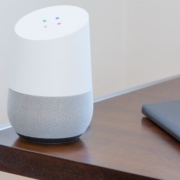Here I am with another useful design pattern for you — the adapter design pattern. I will also highlight the differences between the decorator design pattern (see my previous article, Decorator Design Pattern in Java, here) and the adapter design pattern.
Adapter Design Pattern
- The adapter design pattern is a structural design pattern that allows two unrelated/uncommon interfaces to work together. In other words, the adapter pattern makes two incompatible interfaces compatible without changing their existing code.
- Interfaces may be incompatible, but the inner functionality should match the requirement.
- The adapter pattern is often used to make existing classes work with others without modifying their source code.
- Adapter patterns use a single class (the adapter class) to join functionalities of independent or incompatible interfaces/classes.
- The adapter pattern also is known as the wrapper, an alternative naming shared with the decorator design pattern.
- This pattern converts the (incompatible) interface of a class (the adaptee) into another interface (the target) that clients require.
- The adapter pattern also lets classes work together, which, otherwise, couldn’t have worked, because of the incompatible interfaces.
- For example, let’s take a look at a person traveling in different countries with their laptop and mobile devices. We have a different electric socket, volt, and frequency measured in different countries and that makes the use of any appliance of one country to be freely used in a different country. In the United Kingdom, we use Type G socket with 230 volts and 50 Hz frequency. In the United States, we use Type A and Type B sockets with 120 volts and 60 Hz frequency. In India, we use Type C, Type D. and Type M sockets with 230 volts and 50 Hz. lastly, in Japan, we use Type A and Type B sockets with 110 volts and 50 Hz frequency. This makes the appliances we carry incompatible with the electric specifications we have at different places.
- This makes the adapter tool essential because it can make/convert incompatible code into compatible code. Please notice here that we have not achieved anything additional here — there is no additional functionality, only compatibility.
To better understand this, let’s look at an example of geometric shapes. I am keeping the example relatively simple to keep the focus on the pattern. Suppose we have a project of drawing, in which we are required to develop different kinds of geometric shapes that will be used in the Drawing via a common interface called Shape.












Laisser un commentaire
Participez-vous à la discussion?N'hésitez pas à contribuer!